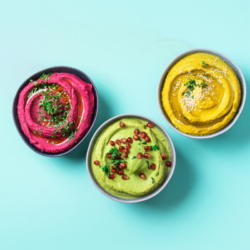Proteins are important elements in our bodies and play a fundamental role in a number of areas. Whether it’s a protein diet or oral supplementation, the role of hyperprotein products is to preserve muscle mass. The aim of the protein diet or protein-sparing diet is to introduce an energy deficit by reducing macronutrient intake: carbohydrates and lipids, while preserving muscle mass by maintaining protein intake. The results obtained are very good. In successive stages, the aim is to achieve a balanced diet.
What are high-protein supplements used for?
In France, protein accounts for around 15% of calories, or roughly 1.2g of protein per kg of body weight. In a high-protein diet, protein accounts for 20-25% or even 30% of calories.
Protein-sparing diets are becoming increasingly popular in the treatment of obesity. The principle behind these diets is to induce a significant calorie deficit by providing a diet rich in protein, so as to avoid inducing an excessively negative nitrogen balance. These diets often result in rapid and significant weight loss (between 18 and 22 kg in 12 to 15 weeks). A preliminary medical check-up is essential, as is regular monitoring during the diet. Doctors reserve the prescription of protein-sparing diets for people with proven obesity.
High-protein supplements and satiety
Obesity is a current public health problem, linked in particular to an excess of adipose tissue. Its definition is based on the body mass index (BMI). The prevalence of obesity is rising steadily, especially among children. Etiological analysis of obesity mainly identifies essential obesity and, more rarely, secondary obesity. In particular, obesity results from an imbalance in the energy balance, leading to an inflation of fat reserves, the causes of which are multiple. Obesity can have life-threatening pathological consequences. The dietary treatment of obesity is based on an understanding of human energy requirements and a comprehensive approach. Hyperprotein diets enable fat mass to be attacked without feeling tired or hungry.
Protein consumption improves satiety (secretion of cholecystokinin, which has an anorexogenic effect) and therefore helps to reduce food intake.
Satiety and thermogenesis
Proteins act by increasing thermogenesis, i.e. the number of calories burnt by the body even without exercise, and by reducing appetite, which means that this type of diet consumes less energy and eliminates more.
Feeling full and maintaining basal metabolic rates (the body’s essential energy expenditure) despite a negative energy balance can be a good strategy for losing weight.
Proteins are the most satiating macronutrient, because they induce greater thermogenesis, followed by carbohydrates and then fats.
In general, increased satiety was observed after meals with a protein content of between 25% and 81%.
Increased thermal effect of digestion:
When food is ingested, it requires energy to be digested, absorbed, stored and used. However, the metabolic process is not the same for all macronutrients. The thermal effect of proteins is significantly higher than that of carbohydrates and fats. Protein requires 25-30% of the energy it provides just for digestion, absorption and assimilation, while carbohydrates only require 6-8% and fat 2-3%. This means that protein consumption has a higher thermogenic effect than other macronutrients, and can lead to a higher metabolic rate and therefore greater fat loss during a weight-loss diet, but also less fat during high-calorie diets.
Protein recommendations
Before knowing how much protein to consume per day, we need to know how much protein a man catabolises every day.
In a sedentary man in good health, catabolism (the rate at which body proteins are broken down) reaches 300 g per day. This breakdown is therefore offset by a roughly equivalent anabolism. Of the 300g of protein catabolised, 80% will be recycled and reused for anabolism. The remaining 20% is irreversibly destroyed and must be replaced by food.
Requirements are slightly higher for children, pregnant women and athletes.
In France, the minimum nutritional intake (ANC) for proteins was set at 0.83 g/kg/day by AFSSA in 2007 (now ANSES).
The lower limit should be set at 10% of total energy intake for the general adult population and 12% for people with low energy expenditure.
The upper limit should be set at 20%; according to ANSES, this limit may be satisfactory for most adults. Given the current state of knowledge, protein intakes of between 0.83 and 2.2 g/kg/d can be considered satisfactory for an adult under the age of 60″.
According to the LaNutrition.fr website, the French reference on nutrition, we need to consume between 15% and 29% of our calorie intake in the form of protein, with half coming from plant sources and the other half from animal sources. That’s 50g a day for an average woman and 60g for a man.
What are the consequences of a protein deficiency?
- Fatigue and hair loss
- Brittle nails
- Impaired eyesight
- Fragile ligaments
- Osteoporosis
- Immune system deficiencies (repeated infections)
However, this protein-rich diet should only be undertaken under medical supervision, to avoid any health problems. Hyperprotein products can also be used to treat protein-energy malnutrition, which results from a mismatch between protein and/or energy intake and requirements. These products, used in oral supplementation, are generally high in calories and can be enriched or free of various components such as lactose and gluten, depending on requirements. These days, there are many hyperprotein products available in a wide range of flavours, making it easy to comply with both protein diets and oral supplements.
Medical literature and clinical trials:
- Agence Nationale de Sécurité Sanitaire de l’Alimentation, de l’Environnement et du Travail. Apport en protéines: consommation, qualité, besoins et recommandations. Summary of the AFSSA report. 2007
- Lanutrition.fr. Proteins. www.lanutrition.fr. 2006 March
- French National Agency for Food, Environmental and Occupational Health and Safety (ANSES). ANSES OPINIONS and REPORTS relating to the updating of the PNNS benchmarks: development of nutritional references
- Berardi JM. Precision nutrition, strategies for success. 2006
- Carrio C. CTS Nutrition. Fabrègues: CTS Edition; 2013
- Reyna N, Moreno-Rojas R, Mendoza L, Urdaneta A, Artigas C, Reyna E, Cámara Martos F. Snack high whey protein improves the level of satiety and reduces appetite healthy women. Nutr Hosp. 2015 Oct 1;32(4):1624-8
- Bonjour JP. The dietary protein, IGF-I, skeletal health axis. Horm Mol Biol Clin Investig. 2016 Oct 1;28(1):39-53
- Pesta DH, Samuel VT. A high-protein diet for reducing body fat: mechanisms and possible caveats. Nutr Metab (Lond). 2014 Nov 19;11(1):53





